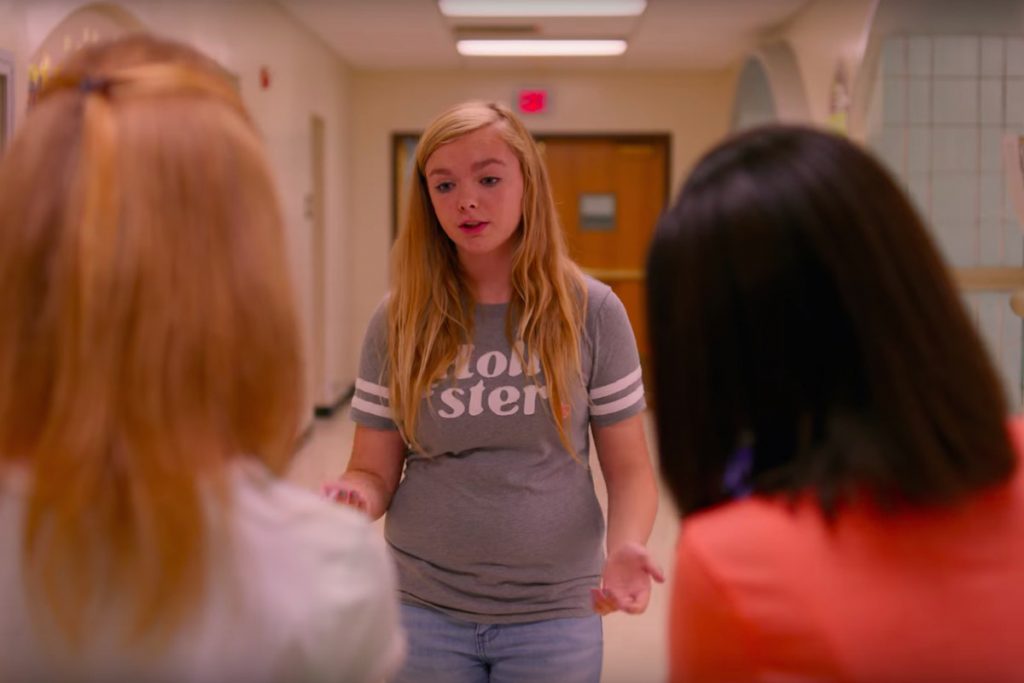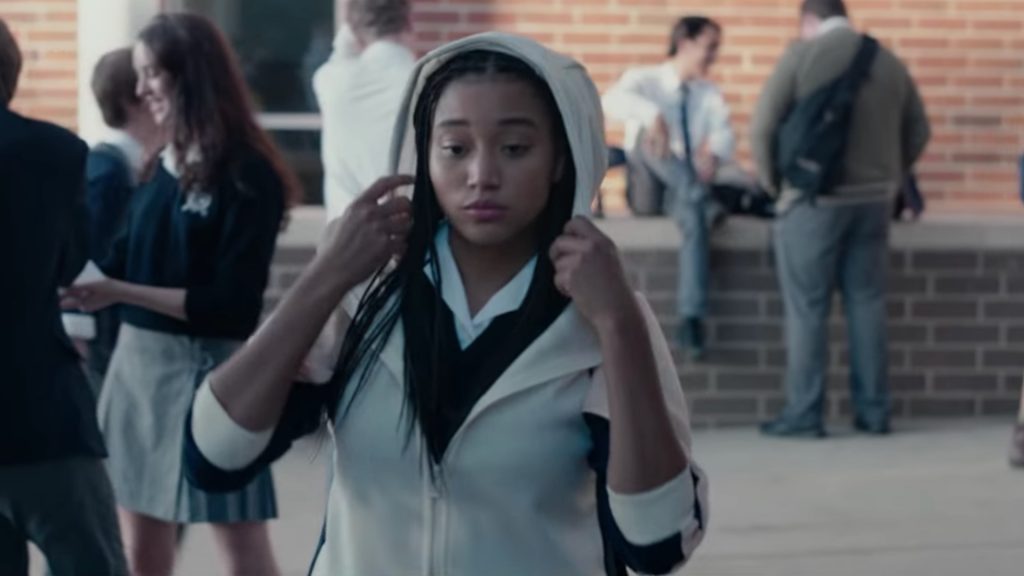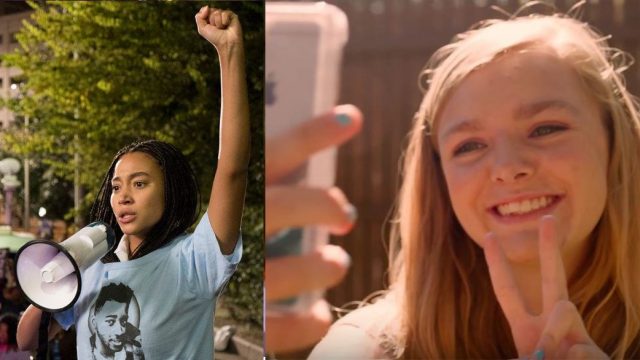Ploughman here. Miller has been making some intriguing double features out of films from the past year and I couldn’t help but take the idea for a spin myself.
Warning: SPOILERS for both films.
Adolescence is Hell for many, though the tortures take many different forms. Movies have covered the transitional period of teendom several times and from several angles. The expectations are usually simple – the teen will encounter a drama that can only overcome by learning a new skill, a skill coincident to becoming a more mature human being. Much like the heist, this is an elastic framework that can encompass a wide variety of films – from 10 Things I Hate About You to Margaret – and a wide variety of problems. Case in point: comedian Bo Burnham’s debut Eighth Grade and journeyman director George Tillman, Jr.’s YA adaptation The Hate U Give.
First, it must be said that one similarity films share is being anchored by fantastic performances by their young leads. It would have made complete sense for either Elsie Fisher or Amandla Sternberg to get a lot of awards season love, and considering the effect the attention has had on young careers in the past, I’m glad they were passed over.
Eighth Grade is the indie darling with the sort of issues that would have been called “universal” in a time when films like Hate weren’t in the mainstream. Kayla (Fisher) navigates her final year of middle school, a litany of traditional problems (popularity, boys) remixed with modern horrors (school shooting drills, dirty texts). There’s a particular focus on Kayla’s relationship with social media. She creates a series of self-help videos but who they’re supposed to be helping is unclear. Each video has exactly zero or one view (and her hapless, dopey dad has mentioned how much he enjoys watching them). Even Kayla herself follows their advice only intermittently.

It’s a poignant depiction of the pressures on a new and frail identity in a world where there’s an expectation to find not just a voice but also an audience for your fully-formed self. The film’s whirlwind “Orinoco Flow” montage is the capstone of the film’s depiction of our phones as a tricky bit of glass, one that functions as both a mirror and as a lonely window separating us from an apparently happier world. Part of Kayla’s challenge as she grows up will be to interact without the intervening glass and to accept who will and won’t accept her without it.
At the beginning of The Hate U Give, Starr (Sternberg) balances a double-identity. She’s been sent to a private high school by her mother in an attempt to open her options in a neighborhood where poverty and racism can close them off quickly. Starr hides her home life from her white schoolmates and downplays her schooling around her black friends in the neighborhood. Starr moves between the worlds, adjusting more effortlessly than our eyes between the darker tones of the home scenes to the high school bathed in a neon blue, like one world receives more sunlight than the other. Starr’s trying to maintain two identities at a time in life when having one would be an accomplishment.

And would that her problems ended there. When her childhood friend Khalil (Algee Smith) is killed by police during a traffic stop, Starr finds herself at the center of the ensuing maelstrom. Her lives are threatened – her literal physical safety and the persona she’s carefully constructed for her upper-class peers. She attempts to hide her close connection with the victim even as it stays headline news across the city, but she can’t stay hidden for long. School friends who gleefully stage a walkout protest so they can cut class freak out when Starr posts a picture of Emmitt Till on a Tumblr page. She’s on the streets for the protests when a grand jury fails to indict the officer who killed Khalil. The opportunity presents itself, and she picks up a megaphone to address the crowd. Tear gas canisters fly. Pandemonium ensues.
Violence is much more present and immediate in Hate, where characters confront loaded guns on multiple occasions. In Eighth Grade gunshots are a scary theoretical addressed during an active shooter drill where a fully-armed officer walks down the hall, clicking off dry fires and declaring improperly locked down students dead. Shootings are a remote possibility for Kayla’s class, an inevitability in the lives of Starr and her friends. The weapon of choice in Eighth Grade is sex. Kayla gets the attention of a boy she admires by pretending to have dirty pictures of herself on her phone. In a later, harrowing scene she is sexually harassed and bullied in the backseat of a car by an older boy, an encounter with fear that’s outside the view of the intense but chaste Hate.
From the outside, it’s easy to see the problems of Hate dwarfing those of Eighth Grade – Starr, by dint of being born who and where she is faces obstacles on a different scale than Kayla. But both movies fulfill their duty to the world of their characters. Eighth Grade is far from shallow even when its conflicts involve a difficult makeup tutorial or a swimsuit that doesn’t fit quite right. Our problems are our problems, our internal monologues as sealed off from each other as the worlds of these two movies. The films are valuable dispatches from often lonely worlds and ultimately disperse the voices of their heroes appropriately.
Starr, who tried for so long to downplay her true self finds a megaphone in her hand in the streets. Kayla records a final video – one just for her future self – and signs off on putting her thoughts directly onto YouTube. Eighth Grade sees the value in sitting in silence for a while. The Hate U Give knows it’s time to turn up the volume.


